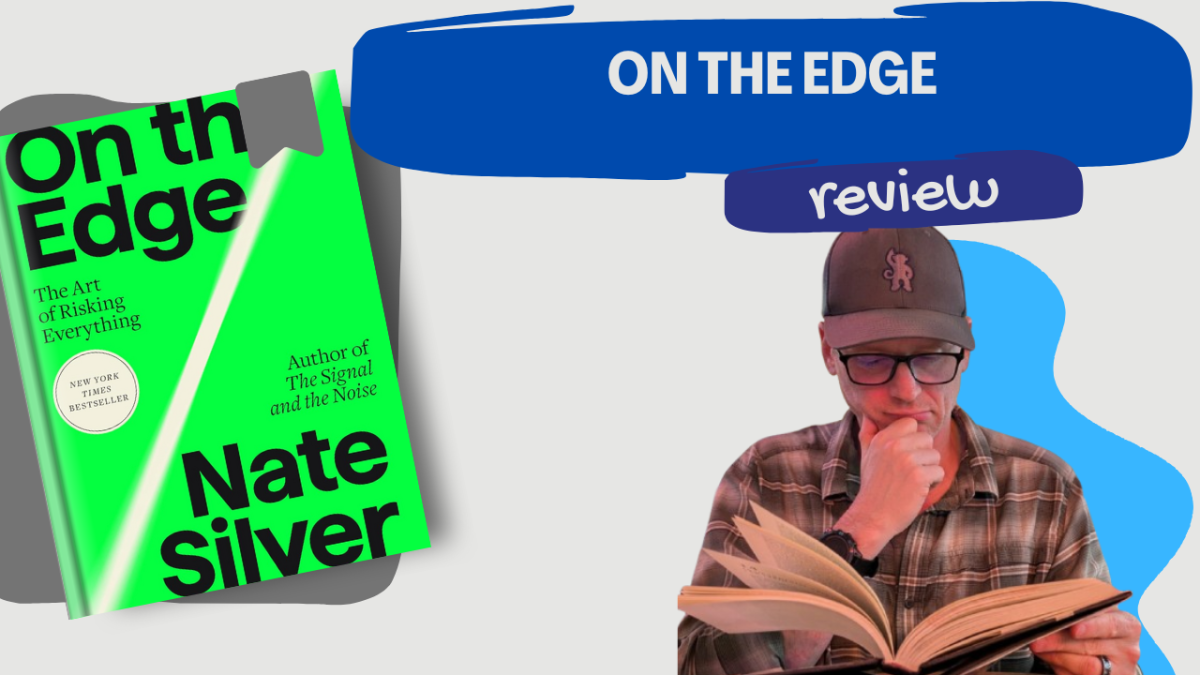This book is part memoir, part investigation, and part manual on how professional risk takers — gamblers, investors, military planners, and a few unusual entrepreneurs — think about an uncertain world.
If you’d rather watch instead of reading, check out the video overview below.
The big idea
What can people who make their living taking risks teach the rest of us? That question drives the book. Silver argues that the world is becoming more complex and uncertain, and that certain people — the ones who live at the edge of risk — have developed mental tools that help them navigate it. If you learn to think more like them, you’ll make fewer avoidable mistakes and better bets on the things that matter.
One framing he uses (and that I found helpful) divides the world into two camps: the River and the Village. The River is full of gamblers, venture capitalists, and others who think probabilistically. The Village is the academics, the institutions, and the social groups that prize certainty and narrative. The tension between these modes of thinking is a recurring theme.
Key themes and takeaways
Think probabilistically
Most people don’t naturally think in probabilities. We live in a world of seemingly single events — a big career decision, investments, where to go to school— and it’s tempting to treat each as unique. Silver emphasizes expected value: focus on repeatable processes and the likely long-term return rather than obsessing over single outcomes.
Process over outcome
Successful risk takers aren’t married to one result. They adopt repeatable processes that, over many iterations, produce favorable outcomes.
Strategic empathy
One of my favorite takeaways: strategic empathy. It’s not sentimental. It’s the habit of modeling what other people will actually do and why. Poker players do this naturally — you put yourself in your opponent’s position and think through their incentives. So do effective negotiators and military planners. It’s a skill you can practice: try to explain a decision you disagree with from the decision‑maker’s point of view.
Take more appropriate risks — and protect the downside
Silver and the people he interviews repeatedly note that many of us are too risk‑averse. We protect ourselves from downside so compulsively that we miss opportunities where a reasonably sized bet could compound into something much larger. That doesn’t mean reckless risk-taking: it means sizing bets so that downside is survivable and upside is meaningful.
How the book is structured
- Gambling and poker: Background on how gamblers think. Useful if you want to see probabilistic thinking in action; you can skim if you prefer to get to the broader lessons.
- Intermission: traits of successful risk takers: A compact list of habits — including strategic empathy and process orientation — that are worth reviewing to see what you can take and use.
- Risk in business and tech: Deep dives into venture capital, AI debates, and why people assign different probabilities to existential scenarios.
- FTX, SBF, and effective altruism: A look at how good intentions, long‑term thinking, and sloppiness in process led to catastrophic outcomes.
- Closing thoughts: Silver’s reflections on nuclear war, AI, and how to adopt better thinking practices for a messy world.
Notable stories and examples
The book is full of anecdotes — from poker rooms to venture‑backed startups — that make the mental models concrete. Two sections stood out for me:
- AI and the probability of doom: Silver interviews people across the spectrum, from those who see human extinction as likely to those who take a more measured view. The useful part isn’t picking a side, it’s seeing how each side constructs probabilities from evidence and assumptions.
- FTX and SBF: A tragic case study in ignoring process. Long‑term thinking without guardrails — and without transparent accountability — can produce spectacular moral hazard. Silver’s reporting helps explain how the incentives were misaligned and how things unraveled.
How I’m using these ideas
Reading this book nudged me towards a few changes. They’re simple, and build on some things I’m already doing:
- Keep a short decision log. For any nontrivial decision I write down best case, worst case, most likely case, and a rough probability. Review these over time and correct course when needed.
- Make processes explicit. If something works even a little, ask how it could scale: more time, more capital, more attention. If scaling it doesn’t add downside, double down.
- Seek people who model uncertainty well. Conversations with people who estimate and track their forecasts will sharpen your sense of where you’re overconfident or underconfident.
- Practice strategic empathy. Before dismissing a decision you don’t like, try to explain it from the other person’s incentives and constraints.
Who should read this book?
If you want to improve your judgment under uncertainty — whether you’re managing money, running a project, or just trying to make better life decisions — this is a useful read.
It’s also enjoyable if you like behind‑the‑scenes portraits of gamblers, VCs, and the risky corners of tech and finance. You can skip parts (the poker chapters, for example) and still get a lot out of it.
Final thoughts
On the Edge isn’t a neat little checklist for avoiding ruin. It’s a set of habits, mental shifts, and stories that help you see uncertainty more clearly. The central idea — favor processes that have positive expected value and learn to estimate — is simple, but applying it consistently changes how you behave.
If you’re interested in sharpening your decision-making, start small: write down one decision this week with probabilities and outcomes, and review it in a month. It’s a modest habit, but it compounds.
Grab a copy on Amazon here: https://adammoody.org/on-the-edge
Or via the WorldCat library system: https://adammoody.org/worldcat-on-the-edge





